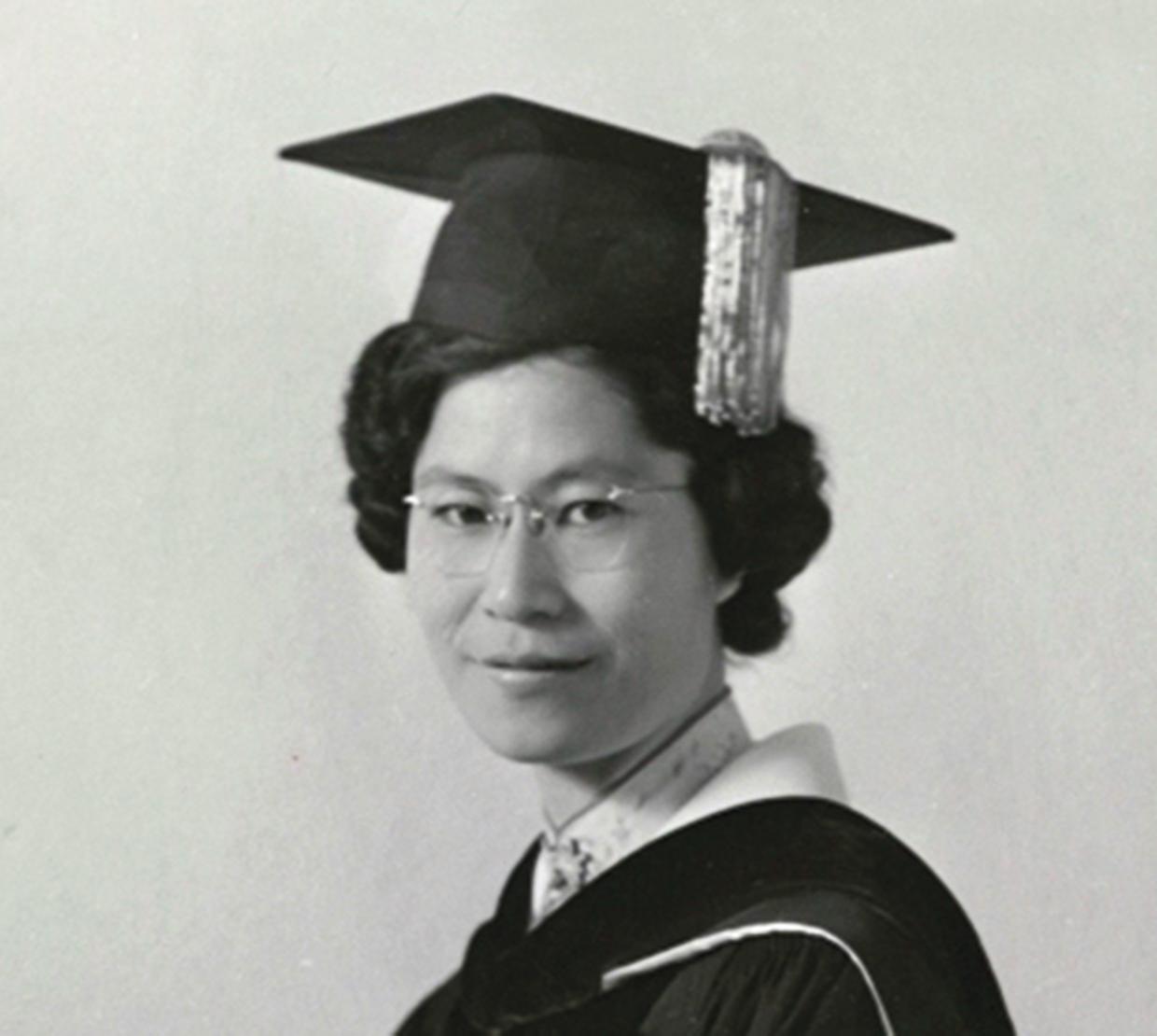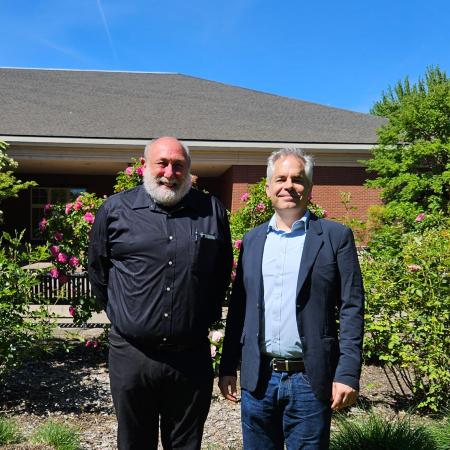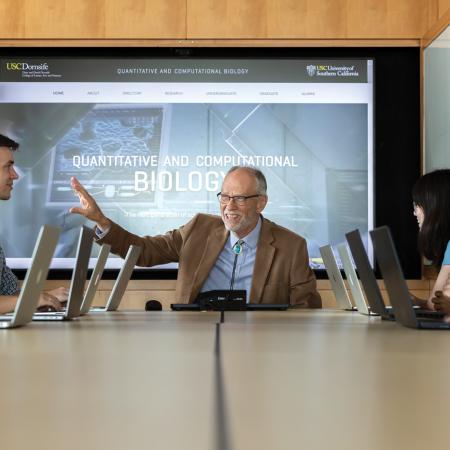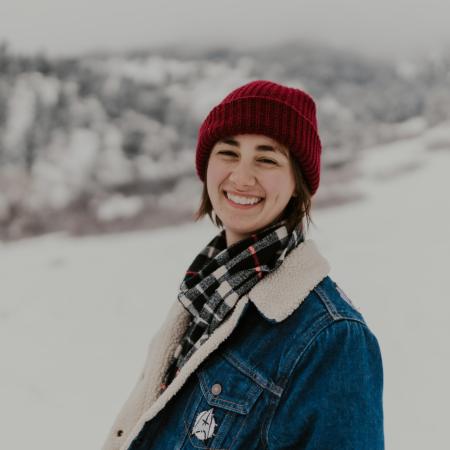Note: this article is part of a series on the distinguished tradition of scientific research pertaining to ocean and space to mark the occasion of Oregon State’s 150th anniversary. Read more: 150 years of science for sea and space(Introduction), Oregon State Science: The many "firsts" in 150 years, The significance of OSU’s sea-, space-, sun- and land-grant designations.
To celebrate Oregon State’s 150th anniversary, the College of Science is shining a light on some of the “giants” who once walked these halls and who helped make our College — and the science we do —what it is today.
Progress —in society and in science — can be defined as a collective endeavor. But occasionally a single individual, whether persevering over the course of a lifetime or in one eureka moment, makes such a difference to the way we think, behave and do science that they deserve special recognition. Looking at their accomplishments, we stand in awe and gratitude.
Remembering these leaders is not just a historical exercise, but a continuing inspiration as to what is possible. There may be giants walking among us today.
Ida Burnett: One of the rare American women west of the Mississippi to pursue a higher education degree in the late 1800s, Burnett practically grew up at Corvallis College (OSU's earliest name), attending its primary school in the 1870s and graduating with a Bachelor of Science degree in 1881. She led a life of service, beginning as an assistant in the preparatory department, promoted to principal from 1894-95, and then was named dean of women at the College from 1906-07. Burnett also taught English at the College from 1896 until her death in 1932. She married Thomas Callahan in 1889; Callahan Hall is named after her.
Emile Pernot: First hired by the College in 1890 to photograph campus scenery and diseased fruit trees and vegetables at its various Agricultural Experiment Stations, Pernot quickly discovered the ‘very important and useful” work of “photo-micrography.” Over the next 20 years, he laid the foundation for bacteriology and for our present-day Department of Microbiology at Oregon State. His hundreds of engravings, slides, and micrographs – and later laboratory experiments -- led to dozens of immediate improvements in health and agriculture, from fruit preservation, grain storage, and cheese-making to poultry and livestock disease management.
In 1899, bacteriology was listed for the first time in the College catalog as taught by “Emile F. Pernot, Bacteriologist” and increased to a Department offering 14 courses by 1909. Similar to the novelty and potential of microbiome research today, bacteriology in the early 1900s promised a revolution in agriculture, health, and many other fields.
After leaving Oregon State in 1910, Pernot served as Portland’s city bacteriologist and also ran his own Pernot Laboratories. There he spent long hours developing a flu vaccine during the 1918 epidemic and worked for more than 35 years on tuberculosis, leading to the discovery of the bacillus responsible for tuberculosis in poultry. He received an Award of Honor for being the “Father of Avian tuberculosis” at The Hague in the Netherlands.
More recently, Pernot’s daughter, Mabel E. Pernot, made a major contribution of more than $500,000 to the Department of Microbiology in 1991 to support microbiology education and research.
Linus Pauling: One of OSU’s most famous alumnus, Linus Pauling was an American chemist, biochemist, peace activist, author, educator; father of quantum chemistry and molecular biology; author of more than 1,200 papers and books; winner of the 1954 Nobel Prize in Chemistry and the 1962 Nobel Peace Prize. A 1922 OSU graduate in chemical engineering, Pauling has a substantial influence on campus that continues today through the Linus Pauling Science Center, the Linus Pauling Legacy Award and the Ava Helen and Linus Pauling Papers archive at OSU. This historic collection contains more than 500,000 items reflecting Pauling’s long and varied scientific career and, together with his wife Ava, his dedication to world peace.
Francois A Gilfillan: OSU’s Renaissance man, Gilfillan’s career spanned more than 50 years as a student, chemistry professor (1927-39), acting president (1941-42) and a long-time dean of science (1939-62). In addition to his many contributions in pharmacy and chemistry research, Gilfillan spoke German, Russian, French, Italian and Chinook; translated Latin, Greek, Chinese and Sumerian inscriptions on clay tablets; and collected rare books and antique silver. His estate made major contributions to the university’s collection of rare books and also sponsors the annual F.A. Gilfillan Memorial Lecture each spring. The Gilfillan award recognizes distinguished scholarship in science by honoring a faculty in the College who demonstrates a long and exceptional scientific career with scholarly achievements widely recognized nationally and globally.
Chung Kwai Lui, emigrating directly from China to Corvallis, Lui was not only one of the first two students to enroll in the newly formed physics graduate program in 1936, but also OSU’s first female Ph.D. student in physics in 1941. After graduation, she worked at Westinghouse as a researcher, investigating materials for incandescent lighting, including uranium. She was selected to work on the top-secret Manhattan Project thanks to her expertise in purifying microscopic quantities of uranium. In 1949, she was named “Woman of the Day” by Eleanor Roosevelt. She and her husband, Hsin Hsu Wei, continue to benefit OSU through the legacy of the Wei Family Foundation, which supports undergraduate and graduate scholarships in science and mathematics.
Warren Washington: earned a Bachelor of Science in physics (’58), a master’s degree in meteorology (’60) from Oregon State and a Ph.D. in meteorology (‘’64) from Pennsylvania State University. Washington spent his entire career at the National Center for Atmospheric Research. He became an internationally renowned climate scientist and was awarded the National Medal of Science in 2010 and an honorary Ph.D. from OSU in 2006.
Sue Borden, completed her master’s degree in mathematics in 1962 at OSU and remained on campus as an early computer programmer for the oceanography department. In 1988, Borden was hired to lead the SMILE (Science and Math Investigative Learning Experiences) Program at OSU, an initiative seeking to promote interest in the STEM fields and enrollment in college among Oregon's minority and under-served youth. By the time Borden retired from OSU in 1999, the program had been implemented in 10 communities across the state and was acknowledged by the Clinton Administration with a Presidential Award.
Read more:
Science at OSU has always been a trailblazer, continuing a tradition of outstanding ocean and space research. Find out what it means for OSU to have Land-,Sea-, Space- and Sun-Grant designations. Science at OSU can proudly lay claim to many “firsts” in its 150-year history.



